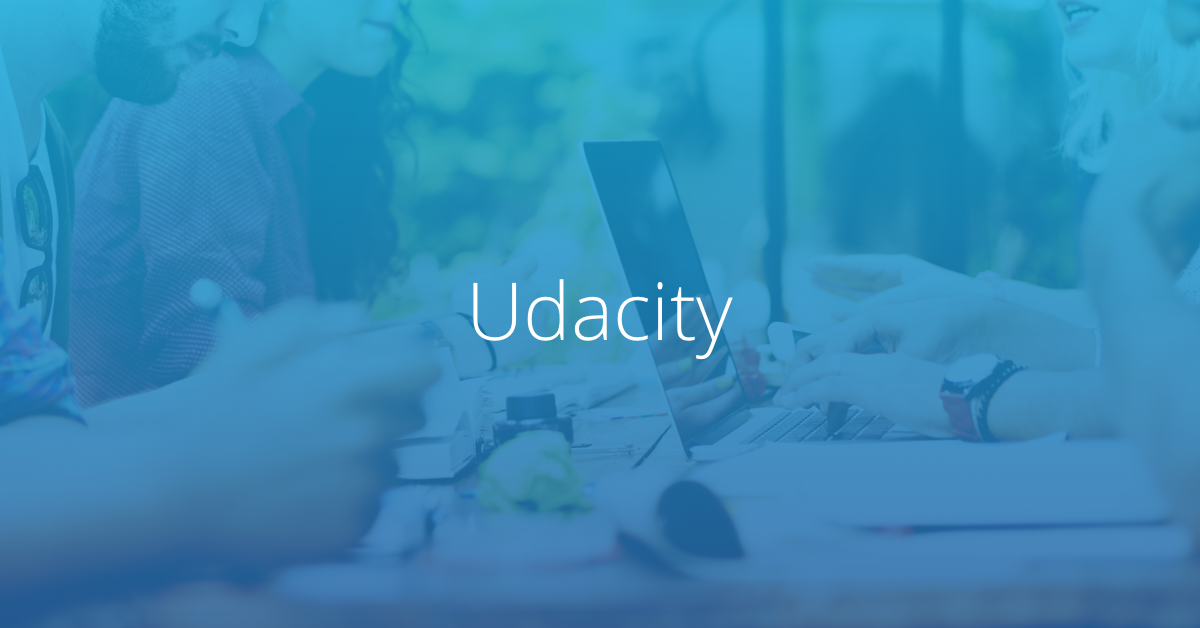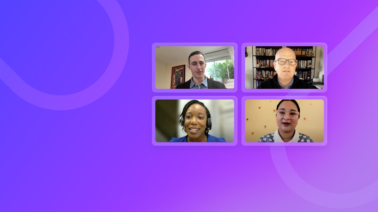A virtuous cycle of feedback, analysis, and action—powered by 1.5M student feedback signals a year—drives ongoing refinements to the Udacity learning model.

Udacity has been, from the start, a learning company. And we do not just mean our students. We are lifelong learners as well. The world of Udacity is a living, breathing organism, constantly in motion. We benefit from, and ideally contribute to, a spirit of progressive disruption in the field of career-focused education, and we recognize the fundamental advantages technology affords us when it comes to refining our service.
Our mission to democratize education would not be achievable without the global reach an online model affords us. Our commitment to teaching transformational technologies such as artificial intelligence, robotics, and autonomous transportation—even as these technologies are still emerging—would not be feasible without the speed and flexibility of this model. Our ability to offer cutting-edge curriculum focused on in-demand skills and optimized for modern career advancement, would not be possible without the data and feedback we process.
Agility, responsiveness, and dynamism are baked into our system. We roll out new features on a monthly, weekly, even daily basis, based on a virtuous cycle of feedback, analysis, and action. In the past year alone, we processed more than 1.5 million student feedback signals on our Nanodegree programs! We also receive valuable feedback from our industry partners, covering everything from curriculum to hiring trends. Over time, we adapt the design and structure of new Nanodegree programs to optimize for engagement rates and career advancement, and when those adaptations prove effective, we weave them into existing programs as well.
A key evolution has been our move towards a term model for Nanodegree programs, featuring flat fees, fixed start and end dates, and clear project deadlines. Our first term-based program launched in 2016. As of this week all 27 Nanodegree programs are now structured into terms. We know this model fosters increased community engagement, improves graduation rates, and leads to better student outcomes.
Stronger community
One of the most consistent pieces of feedback we receive from our Nanodegree graduates is how much they value the community aspect of their programs. The ability to work together, draw on each other’s support and experience, and be accountable to one another is invaluable. Students build their professional networks, form teams to collaborate on challenges, go on to launch products, and even start companies together. Knowledge-sharing environments such as forums and Slack channels become vital resources, and symbiotic mentoring relationships foster accelerated progress—currently, there are more than 20,000 interactions between mentors and students every day!
In a term model, where students learn at the same pace, as part of a cohesive community, the learning results are also significantly better. More universally relevant knowledge gets shared, questions being asked are more valuable to the entire group, and high-quality answers become a resource for everyone. Live events such as interactive talks with subject matter experts also hold more value, as topics can be optimized towards subjects the entire class is actively focused on. Plus, students tell us they simply feel more connected—to one another, to the class, and to their work.
To further support a strong student community, we are also introducing Study Groups (an immersive social learning model that fosters group learning, improves student engagement and outcomes, and features certified mentors) and Knowledge (a student-driven help experience that surfaces high-quality questions and answers though upvotes and Udacity certification). Together, these program changes and newly-introduced features will continue to promote a community experience of significant value to our students.
Better outcomes
From the moment we launched our first term-based Nanodegree program, we have closely monitored the impacts on student outcomes, and this has proven to be an arena where we’ve seen consistent success. To date, we have witnessed 16-point increases in graduation rates for students learning in a term model as compared to a subscription model, and we are now excited to replicate this success across all our programs.
Additionally, we are continuing to evolve our career services. We know that “soft” skills like networking, professional profile management, and interview prep are making important differences in success rates for student job-seekers, and this is why we recently elected to make 12 Udacity Career Courses available for free to anyone who wishes to take them.
On average, Udacity students report job updates to our Careers Teams approximately every 6 hours. On a program by program basis, we continue to look for opportunities to build on these existing successes. For example, a key motivation for launching our new Data Scientist Nanodegree program was student-reported data indicating that graduates of our Data Analyst Nanodegree program saw an average salary increase of $17,000. Given the incredible demand for skilled data scientists right now, we saw an opportunity, and built the new program specifically to support students wanting to move further into this lucrative field.
Simplified experience
In addition to moving our programs to term models, we are standardizing features such as term lengths and pricing. In doing so, we are making it easier for each individual student to choose the right program for them.
Feedback from our term model shows that with simplified options, we are making the process of budgeting time more manageable. We know our students are layering their learning into already-busy lives, so it’s critical we provide clear detail around time commitments and workloads. We are also making it simpler to budget finances. Straightforward pricing, with one-time payments, and clear caps on cost, make it easier to plan over the longer term. New payment plans and support will also be rolled out in response to student feedback for more options.
Connecting learning to jobs for all
From our earliest days operating out of Sebastian Thrun’s guest house, scale has mattered to Udacity. The idea behind Udacity came from Sebastian’s realization that with just one AI course online, he and Peter Norvig could educate “more students on artificial intelligence than all of the professors in the world combined.” Our aspiration is to provide a world-class educational experience to every student in the world who wants to connect their learning efforts to their career goals. With every new, data-powered update we make, we get one step closer to realizing this dream.



